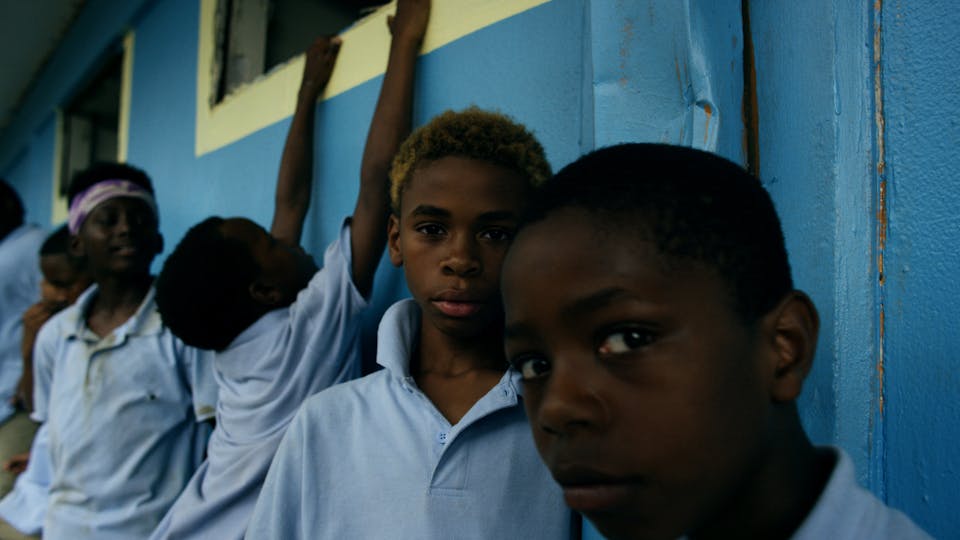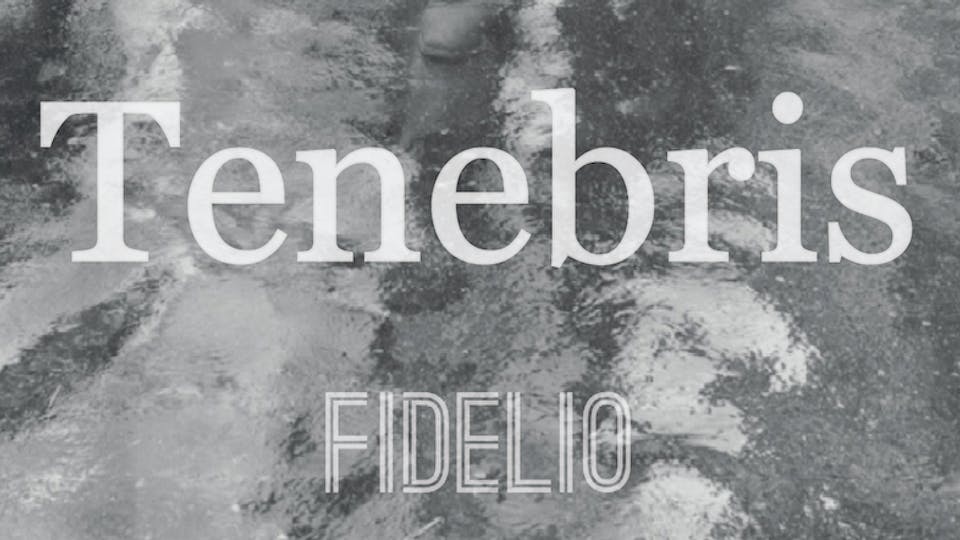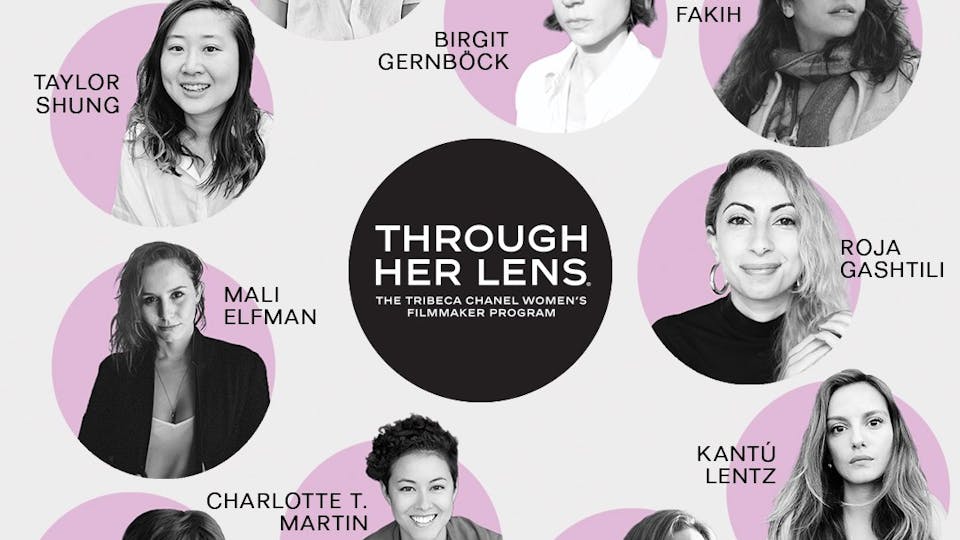5 Major Influences From Jeff Barnaby

Leading up to his big night, Barnaby gave us the five major things that inspire his work.

1. Scott Hampton’s The Upturned Stone
I read The Upturned Stone as a teenager when it was originally published in Heavy Metal. I’d not only cite it is a major influence of Rhymes for Young Ghouls but in my artwork in general. Set in the ‘70s, it follows the final Halloween outing of a group of young boys. They eat a haunted pumpkin pie and a dead boy begins to haunt their dreams, leaving them clues as to who murdered him. It is a beautifully rendered graphic novel, and quite a gritty storyline that deals with some of the same themes as RFYG: murder, vengeance, sex abuse, and loss of innocence. Hampton’s artwork is what really brings it together, there’s one particular panel where the boys see the ghost for the first time coming out of the woods, there’s a direct homage to that image in the film. The Heavy Metal comic was one of the first things I showed our creative heads and said “I want this.” They nailed it.
2. Comic Book Heroes
Two of my all time favorite comic book heroes are Batman and Conan the Barbarian. One of the things that these two men have in common is that they’re both orphans (this only true of Conan’s cinematic version), and this is something that I knew would play into the family life of a Native child, or lack there of, and one of the things that creates an atypical hero. There is this common theme of loneliness, loss, and heartache, between the two of them. Batman is exceptionally fucked up, constantly flashing back to the night his parents got murdered, fixated on trying to avenge a murder that can’t be undone no matter how many criminals he beats. This brutal circle of fatalism with regards to vengeance is something that I wanted to focus on with Aila’s character, and the character of her father Joseph. This idea that family can’t be mended, and no amount of violence is going to rectify that. The influence of Conan came in a much more practical manner: the storyline. A brutal event occurs, rendering our hero an orphan, years pass and the hero takes up a revenge quest against the religious zealots that destroyed their family. Which film did I just outline?
3. Dashiell Hammett’s Red Harvest
Again, this could easily pop up on any list of influencing anything I’ve every done, it is one of my favorite novels, and inspired two of my all time favorite films, Yojimbo and A Fistful of Dollars. The structure of the novel is what I tried to emulate when writing the screenplay. Aila’s character, although formidable in her own right, is still limited by her somewhat small stature, and much like the protagonist in Red Harvest, is forced to get by on her wits and guile by playing all the goons and bad guys off of each other. There is also this under lying tone of Amor Fati in the novel as well as the films, particularly in Yojimbo, the Ronin’s compulsion of duty is echoed in Aila’s loyalty to her friends, and her determinism to have her destiny wrapped up in that of the people she’s trying to protect, to will the things she put into motion to play out till their bitter, blood soaked ends.
4. Chuck Palahniuk’s Fight Club
Chuck Palahniuk possesses one of my favorite writing styles of any author working today—along with James Ellroy and Carlton Mellick III—particularly their penchant for using humor in depicting graphic and lurid material. But it’s the rules of Fight Club and the tone of the narration that make their way into RFYG. I needed a device that both introduced the world to the audience while giving them an idea of the type of control the characters in Rhymes we’re living under all the while adding to the humor. I had written the rules before, but it was the pacing and style of Fight Club that I tried to emulate. “Rule number one of surviving in the Kingdom of the Crow: never befriend an Indian agent.” Quick, pedantic, and usually going over a scene where the rule and or narration was either clearly being broken or describing the situation directly from the perspective of the lead character in a sardonic way. There’s also sections in the book where the narrator goes off on tangents describing the various ways you could prank and or terrorize people, there was one particular prank that inspired the scene in RFYG after the kids make their way back inside the school. It goes by in two sentences in the novel, but when I read it I knew it was something I wanted to see happen to someone, as sick as that is. It was direct inspiration to what is probably the most graphic and disgusting scene in the movie, and helped fill one of the five bodily fluid quotas that I had set myself when writing the film.
5. Rez Life
Growing up on the rez is kind of like growing up on The Jerry Springer Show except there’s no studio audience there to give you that brief elevation in self esteem you get from making an asshole out of yourself on a public platform. I grew up in foster care so I got to experience family dysfunction on a lot of different levels, and this experience by far and away has had the most influence on everything I do period, never mind in my film career. One of the things that had a huge hand in my becoming a storyteller was this consistent misrepresentation of Native people on screen, I mean really everything, and not just by non-Native directors. Indians are repeatedly represented as either villains, or spiritual gurus, and the one that I’ve been seeing lately that annoys me the most is the over dramatized hard life Indian. I guarantee you, anyone that makes movies like this didn’t grow up on a reserve. One of the coping mechanisms of rez life is humor, a dead baby humor that can cope with the enormity of Indian history and Indians present in North America, and given that ongoing timeline that’s a lot of dead babies. What I always find interesting about the reaction to my films is people comment on how violent or gritty they are, I’ve always maintained the idea that all I ever do is represent the background that I come from. This applies to the sci-fi, the dramas, the horror, it all stems from my growing up in Listuguj.
[Photos: Rhymes for Young Ghouls (top); director Jeff Barnaby]






